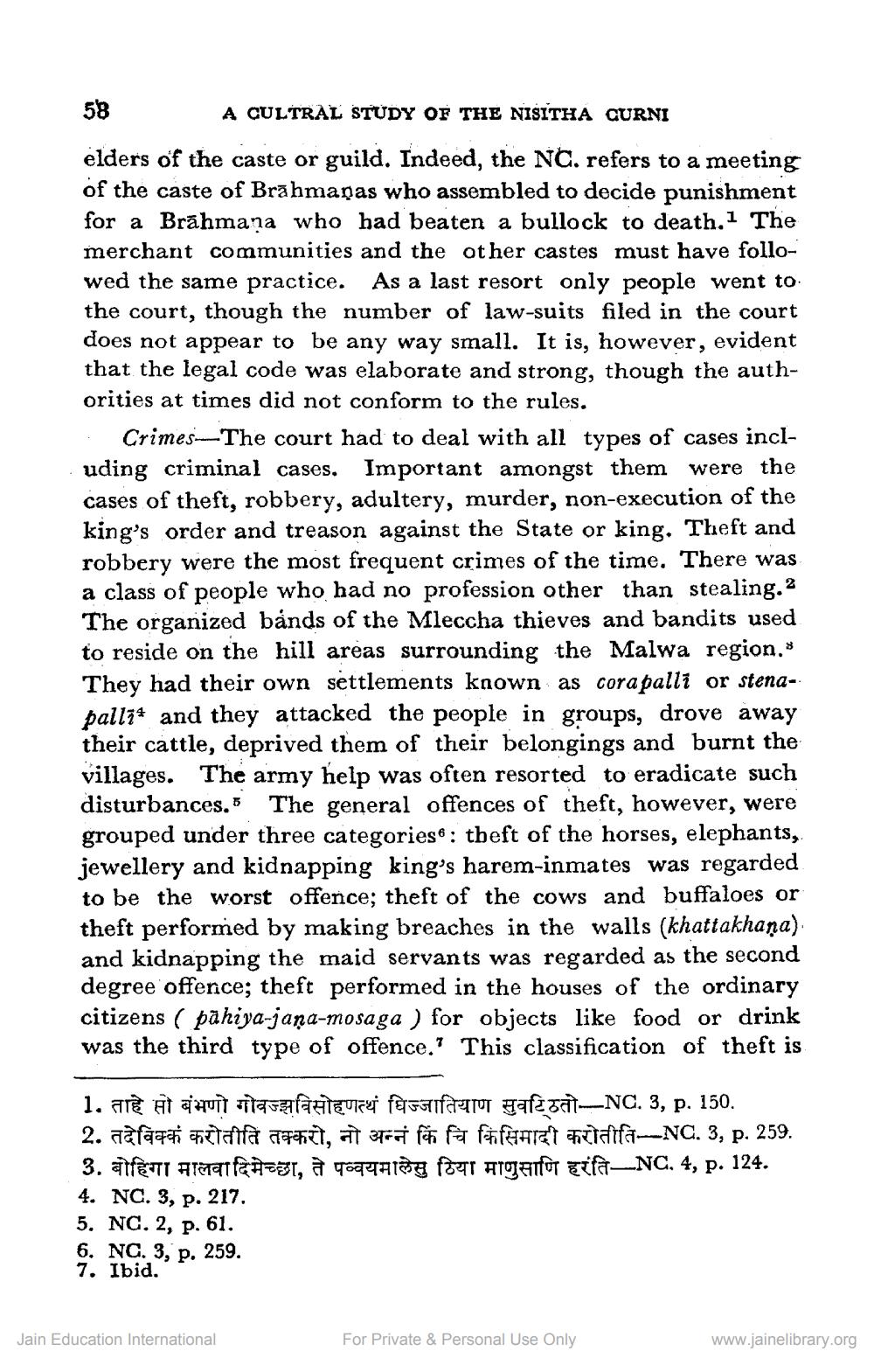________________
58
A CULTRAL STUDY OF THE NISITHA CURNI elders of the caste or guild. Indeed, the NC. refers to a meeting of the caste of Brahmapas who assembled to decide punishment for a Brāhmaṇa who had beaten a bullock to death.1 The merchant communities and the other castes must have followed the same practice. As a last resort only people went to the court, though the number of law-suits filed in the court does not appear to be any way small. It is, however, evident that the legal code was elaborate and strong, though the authorities at times did not conform to the rules. · Crimes—The court had to deal with all types of cases including criminal cases. Important amongst them were the cases of theft, robbery, adultery, murder, non-execution of the king's order and treason against the State or king. Theft and robbery were the most frequent crimes of the time. There was a class of people who had no profession other than stealing. 2 The organized bånds of the Mleccha thieves and bandits used to reside on the hill areas surrounding the Malwa region.s They had their own settlements known as corapalli or stenapallia and they attacked the people in groups, drove away their cattle, deprived them of their belongings and burnt the villages. The army help was often resorted to eradicate such disturbances. The general offences of theft, however, were grouped under three categories: theft of the horses, elephants, jewellery and kidnapping king's harem-inmates was regarded to be the worst offence; theft of the cows and buffaloes or theft performed by making breaches in the walls (khattakhana). and kidnapping the maid servants was regarded as the second degree offence; theft performed in the houses of the ordinary citizens ( pahiya-jana-mosaga ) for objects like food or drink was the third type of offence.' This classification of theft is
1. È ÀI PHUT theo la HEUFU fè sahifa yafe NC. 3, p. 150. 2. alatai aiztaila 777727, 7 fra foto for f ast tillatfa_NC. 3, p. 259. 3. aTETI ATECO AE81, à qoyang ftar ATQafo afat-NC. 4, p. 124. 4. NC. 3, p. 217. 5. NC. 2, p. 61. 6. NC. 3, p. 259. 7. Ibid.
Jain Education International
For Private & Personal Use Only
www.jainelibrary.org




